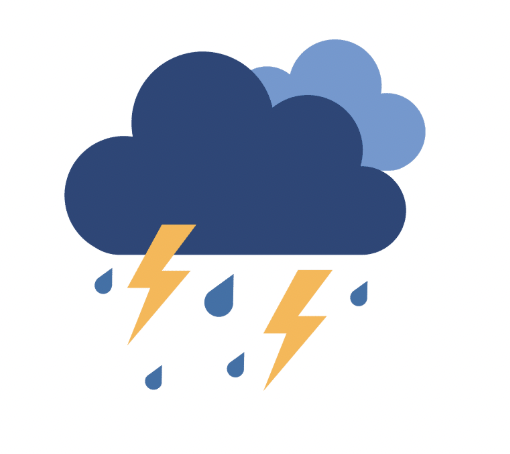That’s why this season is the perfect time to review your homeowners insurance and make sure your policy is storm-ready. Here’s what to look for, and when to take action.
Why Spring Weather Deserves Special Attention
Between March and June, Illinois and neighboring states see a spike in severe weather events—tornadoes, hailstorms, heavy rain, and strong wind gusts. These conditions can:
- Damage roofs, windows, and siding
- Cause flooding in basements or crawl spaces
- Bring down trees and power lines
- Lead to unexpected repair and replacement costs
Even if you’ve never filed a claim before during this time of year, you never know what weather your area will see. It is always better to be prepared than get caught off guard when severe weather hits.
What to Review in Your Homeowners Insurance Policy
Here’s a quick checklist to guide your spring insurance review:
Dwelling Coverage
Make sure the amount you’re insured for reflects current rebuilding costs, not just the market value of your home. Prices for labor and materials can fluctuate a lot—especially after widespread storm damage in your area brings demand for these resources up.
Wind and Hail Coverage
You may not know that not every policy automatically includes full coverage for wind or hail damage. Some policies require add ons to reach what total coverage looks like. Always be sure to review your deductibles for these events—some policies have separate wind/hail deductibles that could be higher than your standard one.
Roof Coverage
In many instances, your policy will cover replacing your roof in case of storm damage. However, if your roof is older, your policy might only offer actual cash value instead of full replacement cost. This means you’d receive a reduced payout based on depreciation. It’s worth checking if this would be the case for your home, and possibly upgrade the policy for full replacement value.
Flood Protection
Standard homeowners insurance doesn’t cover flood damage, even if the flooding is due to heavy spring rain. If you’re in a flood-prone area—or even just have a basement—consider adding a flood insurance policy through the National Flood Insurance Program (NFIP).
Sump Pump and Sewer Backup Coverage
If you have a sump pump or basement, ask your agent about sewer backup or sump pump overflow coverage. Lack of a sump pump or a sump pump that fails is a major cause of basement flooding. Check in if your policy covers this- this coverage is often an add-on (endorsement), but one that can save you thousands after a spring downpour.
Personal Property Coverage
Take a moment to inventory high-value items, especially electronics, furniture, or tools stored in garages and basements. Make sure your personal belongings are insured for their replacement cost, not depreciated value.
When to Review Your Policy
The best time? Right now—before the first major storm hits.
Insurance companies typically don’t allow changes to coverage when severe weather is imminent. So waiting until the forecast calls for a tornado watch may be too late.
Make it a habit to review your policy each spring, especially if:
- You’ve made upgrades to your home (new roof, finished basement)
- You’ve acquired new valuables (TV, furniture, tools)
- Your local area has seen an increase in storm activity
🛠️ Bonus Tip: Take Preventive Steps Now
Even the best insurance can’t prevent damage—but you can still reduce risk:
- Trim trees and remove weak branches
- Clean gutters and downspouts
- Check your sump pump is working properly
- Secure patio furniture and outdoor items
- Review your emergency plan and keep supplies on hand
Let’s Make Sure You’re Storm-Ready
Spring storms can be unpredictable—but your insurance coverage shouldn’t be. If you’re not sure what your policy covers (or doesn’t), we’re here to help.
